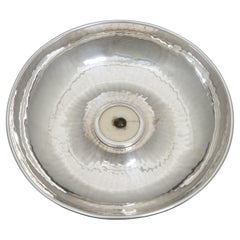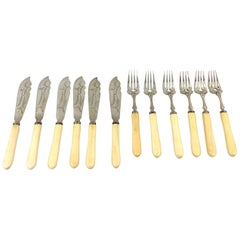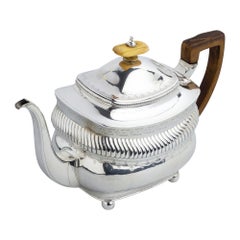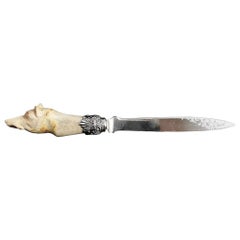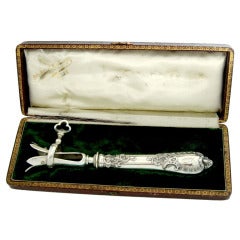Bone Flatware
20th Century Silver Bowls
20th Century Russian Dinnerware and Flatware Sets
Silver
Antique Early 19th Century English George III Coffee and Tea Sets
Silver, Sterling Silver
Recent Sales
Antique 19th Century British Victorian More Silver, Flatware and Silverp...
Sterling Silver
Antique Late 19th Century French Art Nouveau Flatware and Serving Pieces
Sterling Silver
People Also Browsed
Early 20th Century French Art Deco Brooches
Diamond, Jade, Ruby
21st Century and Contemporary Italian Modern Wrist Watches
White Diamond, Blue Sapphire, 18k Gold, Yellow Gold
1990s French Evening Dresses and Gowns
Early 2000s Italian Evening Dresses and Gowns
Early 2000s French Evening Dresses and Gowns
21st Century and Contemporary Italian Coats
21st Century and Contemporary Shoulder Bags
20th Century French Modern Cufflinks
Onyx, Yellow Gold
Early 2000s German Modern Lever-Back Earrings
Diamond, 18k Gold
1970s French Coats
2010s British Belle Époque Stud Earrings
Diamond, Natural Pearl, Blue Sapphire, 18k Gold
2010s British Belle Époque Wrist Watches
Diamond, 18k Gold
2010s British Belle Époque Drop Earrings
Diamond, Blue Sapphire, 18k Gold
Vintage 1980s Italian Retro Cuff Bracelets
Ruby, Yellow Gold
Antique 1890s Russian Neoclassical Drop Necklaces
Diamond, 18k Gold, Yellow Gold
2010s Russian Arts and Crafts Figurines and Sculptures
Chalcedony, Diamond, Garnet, Jade, Pearl, Ruby, Blue Sapphire, 18k Gold
Finding the Right Silver, Flatware And Silverplate for You
While early utensils were often shaped from clay, wood or bone, silversmiths later crafted flatware from precious metal. In the 19th century, mass production of electroplated flatware made silver utensils accessible to the middle class. Now, antique and vintage silver, flatware and silver-plate objects for dining and the home are heritage pieces reflecting this history of design.
Silver spoons were so prized in 15th-century England that people would travel with the valuable utensils. Forks in the 17th century were frequently made with steel and likewise only available to the upper class. Silver flatware continued to be produced in small workshops in the 18th century and was a luxury reserved for the elite. When George I came to the throne in 1714, the silver dining service — including plates, dishes, soup tureens, chargers and sauceboats — became all-important.
Innovative manufacturing techniques such as the electroplating process in the 19th century would transform silversmithing with industrialization. Sheffield plate was used from 1750 to 1880 and involved a fusion method to fabricate everything from knife handles to serveware. French industrial chemist Henri de Ruolz discovered a gilding and silver-plating process for metals in 1841, with the silver-like results so celebrated that Napoleon III ordered a 3,000-piece flatware set. The expansion of table service in the Victorian era also led to an increasing number of flatware and serving pieces in a canteen, or cutlery chest, all with specific uses, from toast forks to butter picks.
While affordable metal flatware is widely available today, historic brands including Gorham Manufacturing Company — whose legendary contribution to the history of silver making started in 1831 — and Christofle continue the tradition of silver and silver-plate flatware.
Browse 1stDibs for both antique and contemporary silver, flatware and silver-plate objects in a range of elegant designs to enhance your dining table.
